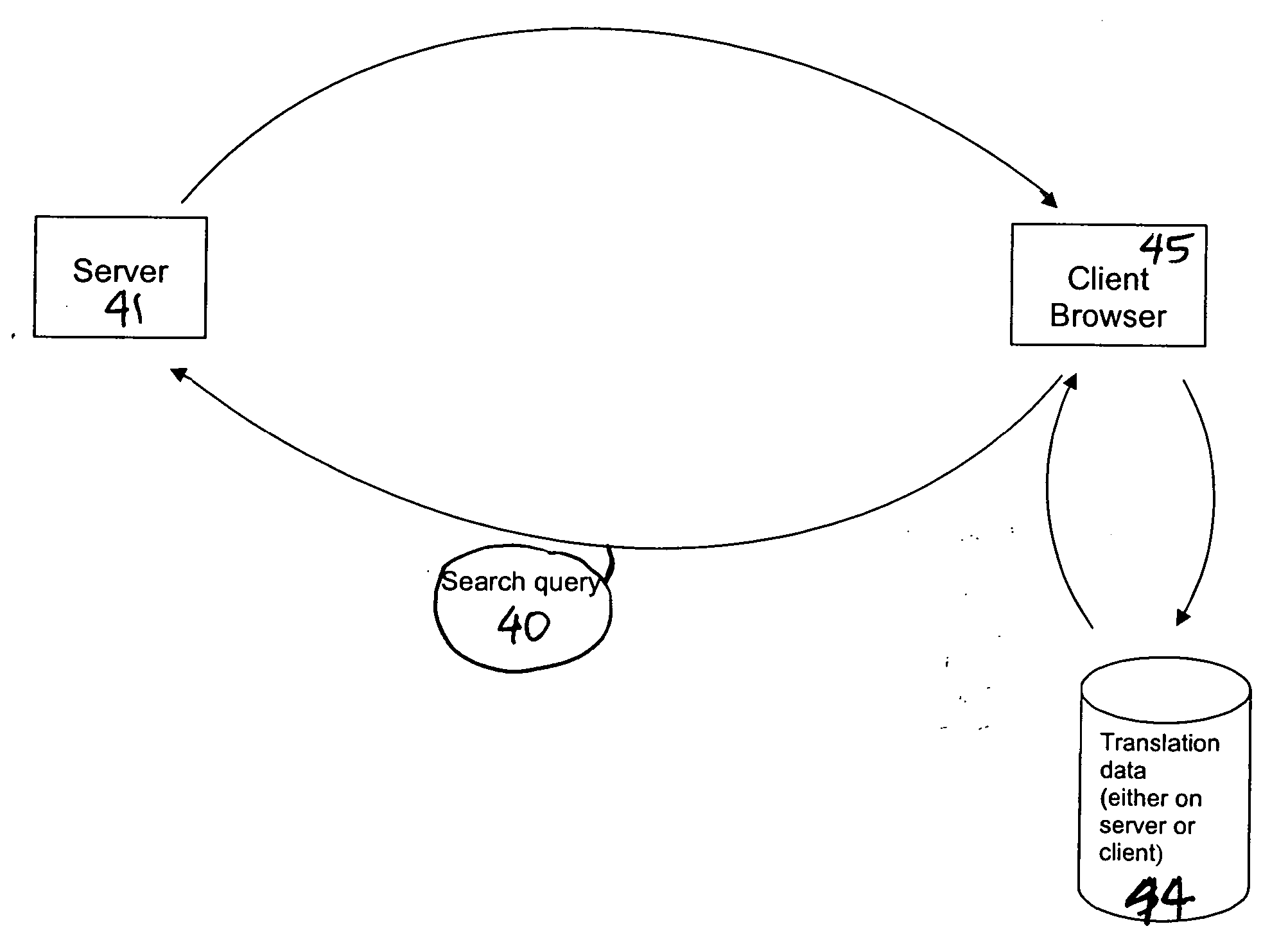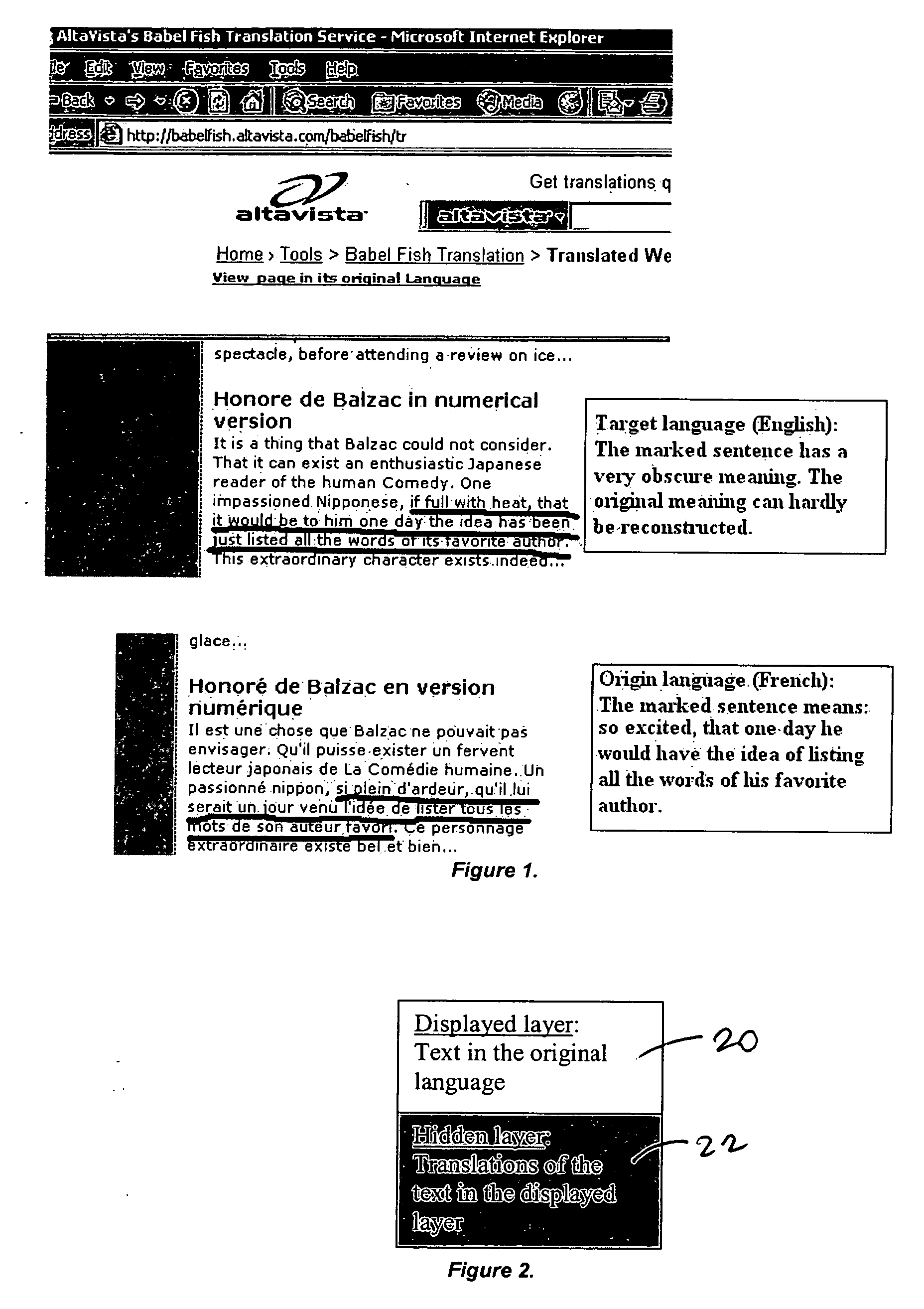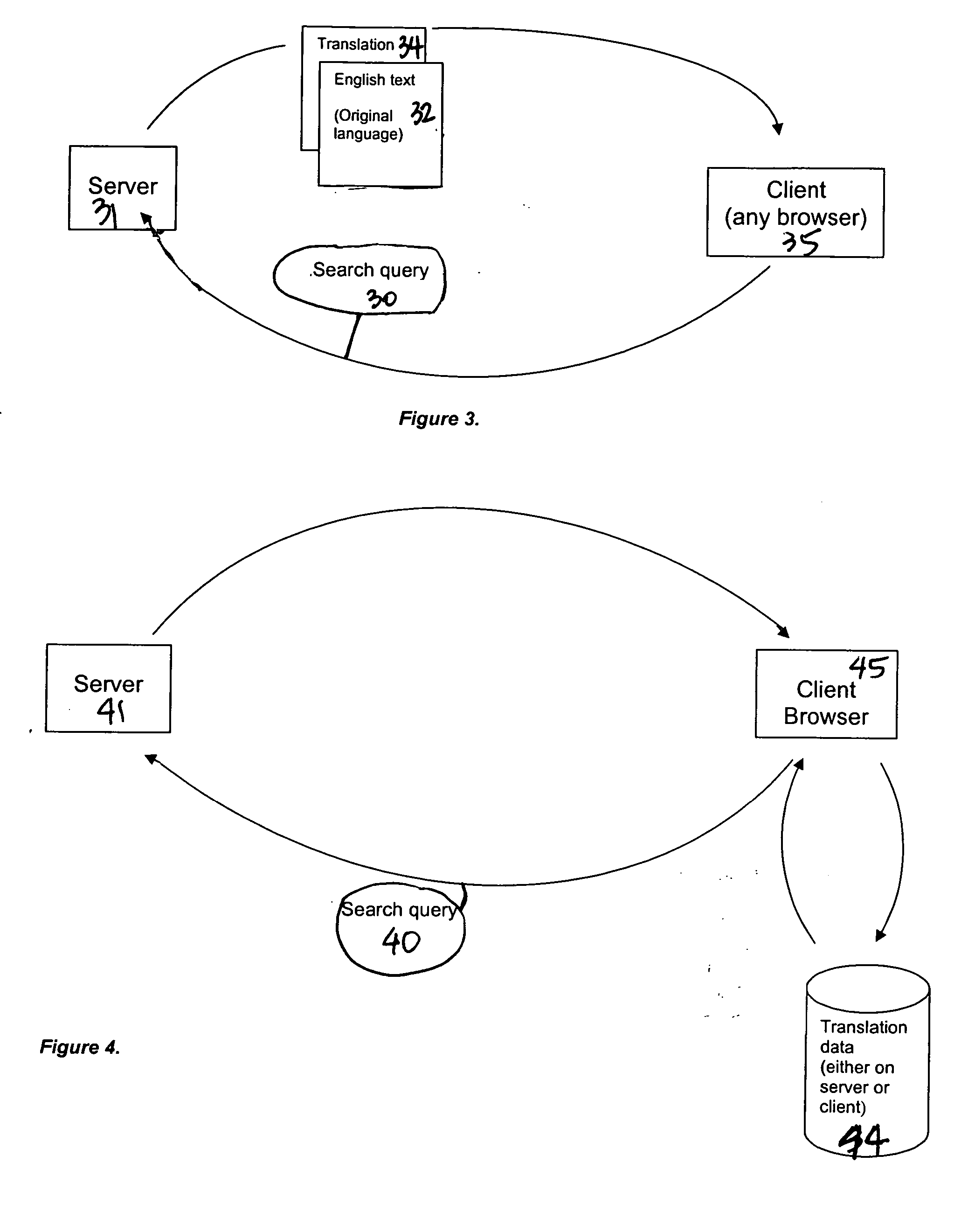Embedded translation-enhanced search
a search engine and embedding technology, applied in the field of language translation, can solve the problems that software or computer-based engines offering a full-page machine translation (such as babelfish, ) and systran (http:, com/) still cannot produce accurate and reliable results
- Summary
- Abstract
- Description
- Claims
- Application Information
AI Technical Summary
Benefits of technology
Problems solved by technology
Method used
Image
Examples
Embodiment Construction
[0019] In embedded translation-enhanced search (ETES), both the primary results of the search engine or the RSS feed summaries, and all pages linked to from these results, are shown to the user in their original language and original format, but contain a sub-layer of translation. Each word (or in some cases a phrase) in the visible layer of this document has, associated with it, its appropriate translation in this hidden layer. In order to see this translation, the reader of the document has, at his or her disposal, an operating means responsive to the reader's selection of a portion of the visible text layer for exposing a portion of the invisible layer over the corresponding portion of the visible layer. The layer is activated many ways, including, but not limited to hovering, clicking, or double-clicking a mouse over the visible portion, touching it with an electronic pen, touching it with a finger using a touch-sensitive display screen, using vocal commands (voice activated), o...
PUM
 Login to View More
Login to View More Abstract
Description
Claims
Application Information
 Login to View More
Login to View More - R&D
- Intellectual Property
- Life Sciences
- Materials
- Tech Scout
- Unparalleled Data Quality
- Higher Quality Content
- 60% Fewer Hallucinations
Browse by: Latest US Patents, China's latest patents, Technical Efficacy Thesaurus, Application Domain, Technology Topic, Popular Technical Reports.
© 2025 PatSnap. All rights reserved.Legal|Privacy policy|Modern Slavery Act Transparency Statement|Sitemap|About US| Contact US: help@patsnap.com



